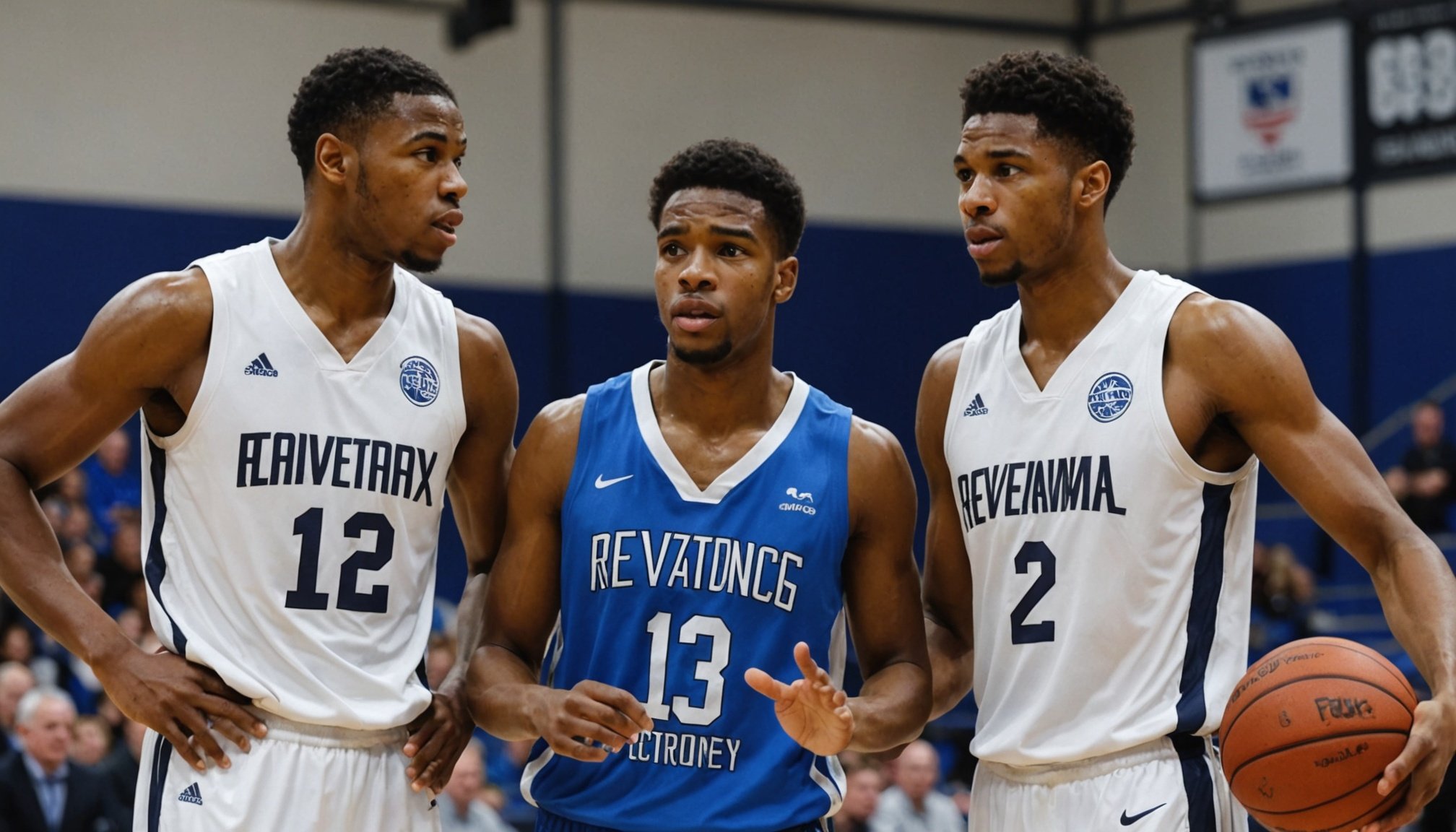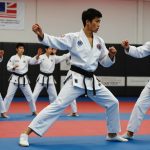Overview of Current Scouting Trends
In the ever-evolving world of talent scouting, particularly within UK basketball academies, keeping pace with the latest recruitment strategies is crucial. Traditional methods of talent identification often rely on physical tryouts and subjective assessments. However, recent trends are shifting toward a more data-driven approach, integrating technology to enhance precision in scouting.
Emerging trends in talent scouting involve leveraging video analytics, wearable technology, and even machine learning algorithms to assess players’ performances in real time. These innovations allow scouts to identify subtle skills and potential in athletes, providing a comprehensive picture that transcends conventional scrutiny. This technological embrace is steadily becoming a hallmark of UK basketball academies as they aspire to fine-tune their recruitment strategies.
Have you seen this : Elevate your game: key shot-blocking skills every uk basketball center should master
Internationally, successful scouting models often embed culturally inclusive practices and diverse evaluation criteria, setting benchmarks that UK academies strive to reach. By comparing UK practices with these successful global paradigms, academies can glean valuable insights into refining their own systems. The confluence of these advanced recruitment strategies and international best practices promises a future where UK basketball emerges as a formidable talent hub, discovering and nurturing the next generation of athletes more efficiently.
Innovative Recruitment Strategies
Innovative recruitment strategies are reshaping the dynamics of player development in sports academies. These cutting-edge recruitment methods focus on identifying and nurturing talent from a broad spectrum of environments, ensuring a robust pipeline of skilled athletes.
Also to see : Top off-season techniques for uk basketball players to maintain muscle mass
Utilizing Technology for Talent Identification
The integration of data analytics in scouting processes is a game-changer. By employing advanced tools, scouts can precisely assess athletes’ performances, capturing intricate details often missed in traditional evaluations. This tech-driven approach enables a more objective selection process, enhancing the accuracy of talent identification.
Engaging with Local Communities and Schools
Engagement with local communities plays a crucial role in discovering raw talent. By establishing grassroots programs, academies build a foundation for nurturing potential athletes from a young age. Schools become a breeding ground for scouting, facilitating access to diverse pools of talent and enabling early development.
Creating Partnerships with Professional Clubs
Collaborations with professional clubs provide invaluable opportunities for young athletes. These partnerships create pathways for budding talent to progress to higher levels of competition. Such frameworks support the holistic development of players, combining professional training exposure with educational opportunities, preparing them for a future in sports.
Case Studies of Successful Talent Scouting
Exploring case studies of successful talent scouting in UK basketball academies provides valuable insights into recruitment dynamics. By examining prominent academies, such as the London Lions and Leicester Riders, their recruitment strategies can serve as exemplary models.
For instance, the Leicester Riders have demonstrated remarkable efficiency in identifying potential stars through an innovative approach that integrates technology and community engagement. This strategy has resulted in the emergence of players with notable careers. Additionally, insights from players like Myles Hesson, who rose through academy systems, highlight the importance of robust training frameworks that align with modern talent scouting standards.
However, not all attempts yield success. Some academies have faced challenges within their talent identification methods, prompting necessary adjustments. By learning from these missteps, such as the over-reliance on outdated scouting criteria, academies have refined their approaches for better outcomes.
These case studies underscore the need for continuous evolution and adaptation in recruitment strategies. They showcase the balance between embracing innovative tactics and maintaining foundational practices. Ultimately, analysing these successes and challenges helps define effective methods for fostering young talent in a competitive sports environment.
Best Practices for Developing Emerging Talent
Emphasising player development with comprehensive approaches enhances individual growth and bolsters the success of sports academies. A key component is adopting holistic training approaches that incorporate multi-disciplinary methods. Such training involves not just physical conditioning but also technical skills, strategic thinking, and emotional resilience, ensuring athletes develop well-rounded capabilities essential for their future careers.
Tailored Coaching for Diverse Athletes
Understanding an athlete’s unique needs is crucial, and tailored coaching greatly benefits diverse talents. Customised programs that address the specific strengths and challenges of each player ensure that training is both effective and engaging. This personalised approach not only accelerates development but also fosters a supportive environment conducive to sustained growth.
Incorporating Mental and Emotional Development
Another critical factor is the mental and emotional development of players. Strategies like focused mentorship programs enhance emotional intelligence and resilience. Mentors play a pivotal role in guiding athletes through the pressures of competitive sports, preparing them for setbacks and triumphs. Such support structures are indispensable in developing robust, adaptable athletes who thrive in intense athletic environments.
These practices collectively create a nurturing ecosystem, catering to the diverse needs of athletes while setting a strong foundation for their sporting journeys.
Assessment Tools and Metrics for Success
Evaluating talent in UK basketball academies requires a delicate balance between quantitative and qualitative assessment tools. These assessment tools serve as critical mechanisms in refining scouting practices and ensuring precise player evaluations.
Quantitative metrics often include statistics such as shooting accuracy, speed, endurance, and agility. These metrics provide objective insights into an athlete’s current capabilities and potential for development. Coupling these with qualitative observations like mental resilience and strategic awareness rounds out a comprehensive scouting profile.
Talent metrics need alignment with specific recruitment strategies to be effective. Developing metrics that directly reflect recruitment goals helps academies select players who fit their team philosophies and long-term visions. Continuous evaluation is crucial in this aspect. Consistent feedback loops—where scouts, coaches, and players dialogue regularly—foster an environment of growth and improvement.
Utilizing evaluation techniques that combine these tools alongside technology enables a thorough understanding of an athlete’s strengths and areas for improvement. The integration of modern techniques like machine learning algorithms further refines these processes, ensuring scouts can harness the full spectrum of an athlete’s potential.
Future Directions in Talent Scouting
The landscape of talent scouting is constantly evolving, urging UK basketball academies to stay ahead with forward-thinking plans. As the sport continues to grow, anticipating the future trends in player development is vital to success.
Anticipating Changes in Player Development
Modern basketball demands varied skill sets, making strategic planning crucial. The blending of traditional techniques with contemporary styles is becoming increasingly prevalent. This evolution requires academies to adapt curricula and training regimes that encompass both current requirements and emerging trends in athletic skills.
Strategic Adjustments to Keep Up with Athletic Trends
Staying on top of athletic trends often leads to changes in scouting methods and recruitment strategies. Cultivating agility, multifaceted training, and integrating new technologies boost the efficiency of identifying future stars. Academies need to remodel frameworks and coaching strategies to reflect these advances.
Engaging Youth through Additional Sports and Activities
Reaching the younger demographic involves going beyond conventional recruitment. Exploring the impact of social media as a tool for engagement, UK academies are increasingly leveraging digital platforms. Additionally, encouraging participation in diverse sports activities nurtures a broader base of potential basketball players, cultivating interest and skills applicable across multiple sporting disciplines.











